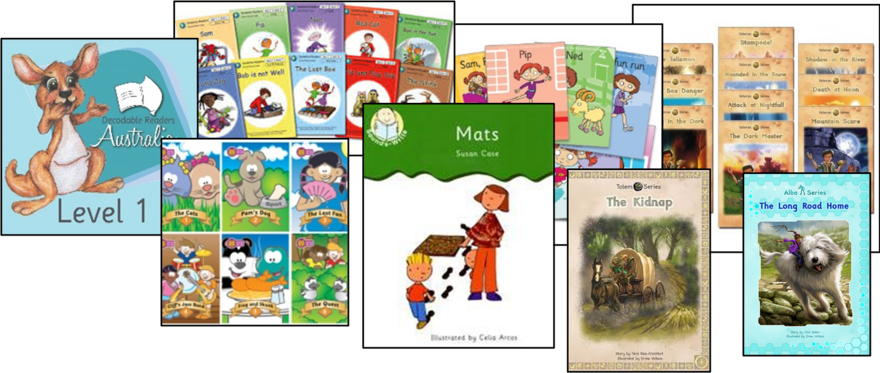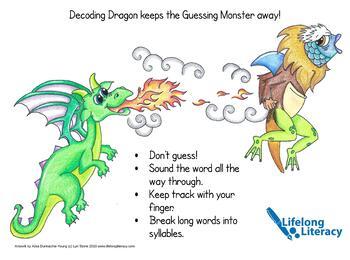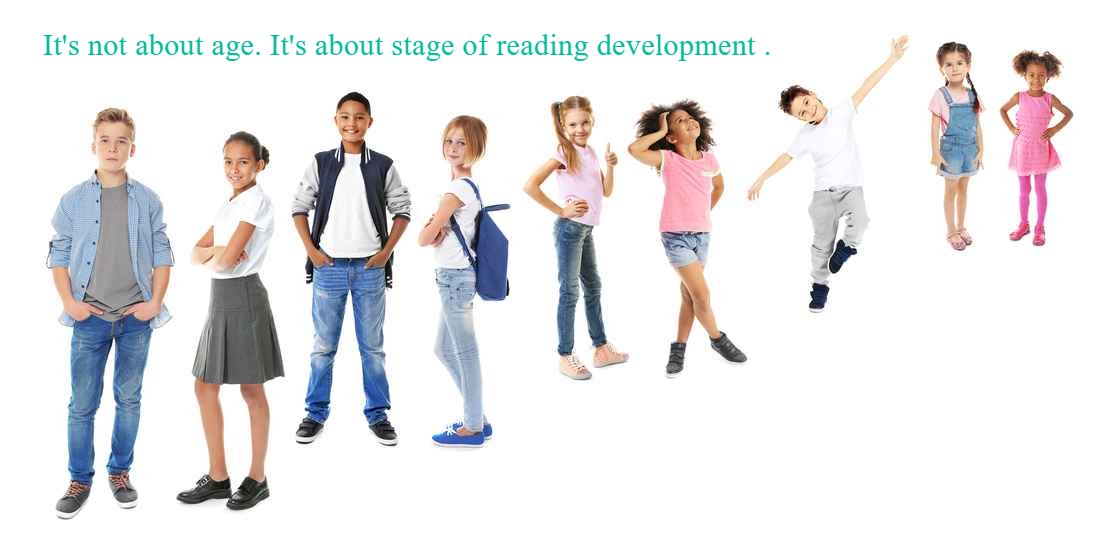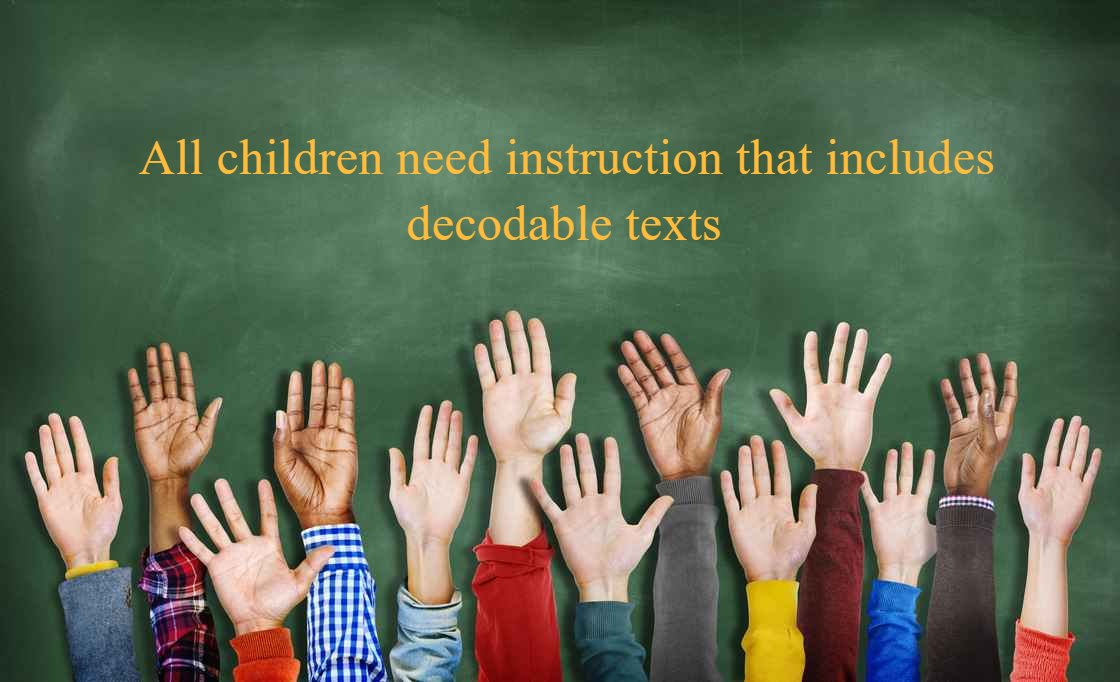Decodable Texts: How Do We Get It Right?

It is now generally accepted that decodable texts of one sort or another are a key part of a systematic approach to reading instruction. Decodable texts provide the practice students need to develop strong decoding skills with reading material containing limited graphemes and sentence structures. In light of the announcement that all NSW Foundation classrooms will receive a delivery of decodable texts, let’s dive deeper into the what, when, who and how of decodables in learning to read.

What decodable texts are and are not:
In case you aren’t familiar with them, decodable texts are simple texts that contain limited graphemes and irregular high frequency words so that students are only asked to read material that they can sound out. There is no guessing, no looking at pictures and no ‘thinking about what makes sense’ to lift the words from the page when reading decodable texts. Poor old decodables sometimes get a bad rap being labelled as impoverished, boring and as encouraging ‘barking at print’ without any attention being paid to other skills of reading. Let’s be clear. The earliest decodables aren’t rich literature. They aren’t meant to be. The primary role of these early texts is to help children get runs on the board and develop the beginnings of fluency at the basic sentence level. When we begin to play football, we don’t just start playing in a professional side where the game is fast and complex and we are in real danger of injury. As children, we play a modified game and attend training to learn fundamental skills. It’s the same with reading. We can’t just throw children in the deep end with books containing the whole alphabetic code and complex sentences and think that they’ll ‘pick it up’. We need to carefully scaffold experiences through decodable texts to allow children to experience success at each phase of the reading acquisition process. Decodable texts are not all ‘the cat sat on the mat’. Quality decodables contain dialogue, a range of sentence structures, rich vocabulary and engaging story lines. Poorer quality ones do not. Just as with any text, we need to be discerning in our choices and use the best quality texts we can access.

When we need to provide them
I could say ‘in the early years’, but that would assume that all children learn to read in the first three years of school. So instead, I’m going to say, ‘Until they have learned the complex alphabetic code and are reading at 90 words per minute’. Now, that doesn’t mean that we have to hold off giving students a variety of sentence structures, rich vocabulary and engaging story lines. It simply means that until students have reached the important milestones mentioned above, we need to be very mindful that we aren’t putting students in the position of having the guess in order to decode. That means that if a student is 10 years old and reading at a rate of 45 words per minute, they need to practice with decodables. If they are 7 years old, have knowledge of the full code and are reading at 110 words per minute, it’s time to move on. The supply of decodable texts is not about age, it’s about reading development.

Who needs decodable texts
The short answer is ‘everyone’. The long answer is a little more complex. While all children move through the same phases of development in learning to read, they do so at different rates and with different levels of ease. My own observations of students have led me to develop 4 categories of students.
- The Easy Peasy Lemon Squeezy Students – seem to acquire reading without difficulty or too much instruction. These children’s brains just put it altogether.
- The Average Children – are seemingly ok with broad instruction in reading. While they benefit greatly from a systematic approach (and it will certainly accelerate and strengthen learning), they seem to be fine with sight word lists and predictable texts. Don’t get me wrong. I’m not suggesting you bust out your predictable texts for these students! They will definitely do better with decodables, but predictables aren’t the end of the world for them. After all, this is how the argument of, “But balanced literacy works fine” has held on for so long.
- The Vulnerable Readers – While average children appear to be ok with balanced literacy, the vulnerable readers are not. These students don’t have a diagnosable reading difficulty but being taught three cueing strategies with predictable texts is an impediment to them becoming proficient readers and they end up reaching the upper primary years of school ‘behind’ or ‘struggling’. Let’s be clear, we aren’t talking about a small percentage of students. With almost 20% of year 9 students not meeting minimum requirements for NAPLAN, it’s clear to see that a large proportion of our students fall into this category.
- Students with a reading difficulty – predictable texts and sight words are a disaster for these students who require a systematic approach for a longer period of time than their peers, delivered with greater intensity and skill.
Just as these four groups of children have different learning needs, they also have a different ‘relationship’ with decodable texts. You can read more about each group’s needs in a previous blogpost here. Just to be clear, I am not saying that only some students need decodable texts. They all do. What I am saying is that not all students need decodables for the same length of time, nor do they all have to only read decodables once they have a decent knowledge of the complex alphabetic code. Pop on over to the post to read more.
How to use them
Decodable texts (either physical books, digital books or sentences/passages printed on A4 paper) need to be a part of every student’s reading instruction. While I explained that 1 size does not fit all in the previous section, that doesn’t mean that some children don’t need decodables. What they do need is decodables that extend them and help them build reading skills beyond the simple sentence level. Students also need access to the right decodables for their stage of reading development, so confining students to texts simply because they match their grade level isn’t effective practice. It’s also not effect practice to simply ‘hand out’ any old decodable texts and say, “Look, we have decodables!” Texts need to be carefully matched to the phonics being learned at the time, but only after a student has developed automaticity with the graphemes contain in the book. So, if you were learning to read the graphemes ‘ay’, ‘ee’, ‘igh’, the decodables you read as you learn them probably wouldn’t contain too many words with these graphemes. Instead, you would practice these graphemes at word and simple sentence level until you have automaticity and then you read longer decodables that contain them. The choice of decodables in instruction needs to be targeted and intentional.

But let me be clear about something. Providing decodables does not mean that children don’t have access to any other books. In fact, I’m a huge advocate for supporting children to spend time with any old book they want to, but that doesn’t mean they have to decode them themselves. Children need to develop a sense of themselves and their relationship with books. If they want to borrow Diary of a Wimpy kid from the school library and look at the pictures, sounding out the occasional word, let them. If they want to have a go at reading Billy B Brown or a picture book, don’t interfere. If a book is too hard, the student will soon choose something else. If it’s their own free-choice time, let them have free choice and of course, continue reading to children for as long as you can. You might be thinking that I’ve gone slightly crazy here, but the thing is that what I’m describing is low stakes, no pressure personal time with books. It’s not instruction. Instruction requires decodable text intentionally and carefully matched to a students’ current needs.
I hope that this post has provided some food for thought. The use of decodables, as with any aspect of teaching, is nuanced and complex. The easy bit is knowing that they will accelerate reading acquisition for all students if used correctly. The harder bit is knowing how to differentiate a decodables lesson that includes both reading and sentence level writing so that every child gets the targeted instruction they need.

 Jocelyn Seamer Education
Jocelyn Seamer Education

9 comments
Hello Jocelyn,
Thanks for another great, informative article.
Do you know if this incentive just for state schools or does it include Catholic system as well?
Fingers Crossed,
Fee
I'm not sure Fiona, sorry!
Hello Jocelyn,
What great news for NSW! Thank you for yet another great read !!
Thanking you, Sandi
Kia ora Jocelyn..thankyou! I've also today read your reading and writing in primary ..early grades.. wonderful..
This is great - thank Jocelyn! Can I ask - is there a good assessment you recommend that can pinpoint the alphabetic code that a child is still to grasp?
Thank you!
Christie
Hi Christie,
A simple, informal assessment that contains graphemes, real words and pseudo words gets the job done. I have one you can download and adapt here.
All the best
Jocelyn
I teach first grade. Would you suggest I use the phonics assessment and stop at the level when a child makes errors and then add assessments as the children learn skills. Thank you.
Having completed both the Reading and Writing Success courses, I am loving using your wonderful teaching techniques with my new entrant/reception children in New Zealand! The best professional learning I have undertaken in 30 years of teaching.
What an impact this has made on my teaching, planning, my understanding of how children learn, my pedagogy and most importantly on the progress the students are making. You have re-energised my passion for teaching. Thank you.
Jocelyn,
It is evident to anyone who reads your blog posts, or has had the privilege of attending your teach along, that you know your craft inside and out.
Your passion for championing every student and arming classroom teachers with the knowledge, tools and confidence they need to reach every learner is inspirational and very much appreciated.
If every school leader’s opinions on best practice pedagogies were as ‘poorly grounded’ as yours, our education system would have nothing to worry about!
Leave a comment